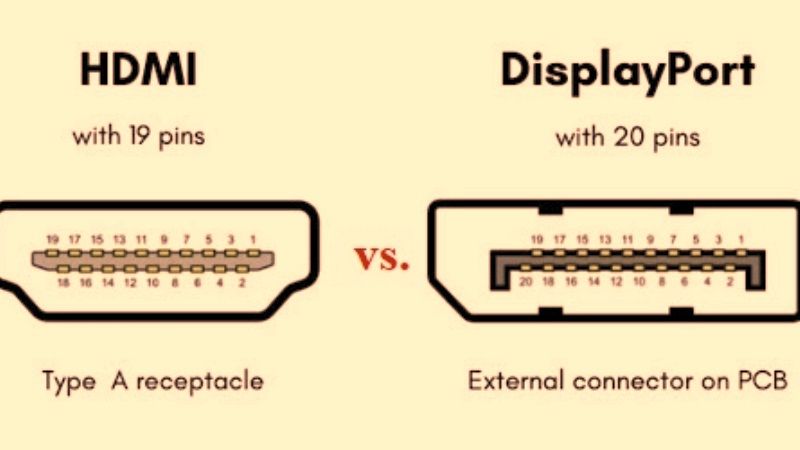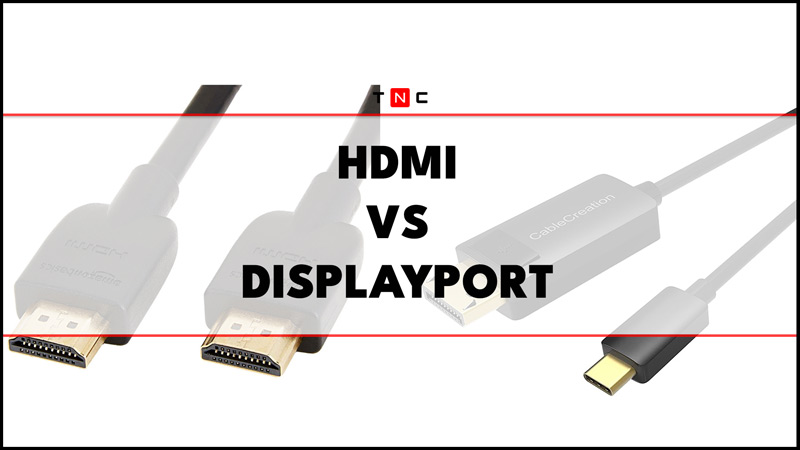When buying a new video card or a new monitor, one of the toughest decisions is choosing the interface: which cable is best to use to connect the display to the PC? The four interfaces that we find in the PC world are VGA, DVI, HDMI, and DisplayPort, which appear in various combinations on both video cards and monitors. If until a few years ago the most widespread standard was VGA, nowadays the choice, in most cases, is contested between DisplayPort and HDMI. Therefore, in this guide, we will talk about which is the best for gaming between HDMI vs DisplayPort.
HDMI vs DisplayPort (2023)

With DVI having now become a type of marginal interface and VGA considered largely obsolete (or in any case linked to low-level products), the challenge between DisplayPort and HDMI is therefore fundamental in the choice phase. In order to better compare the two solutions, it is good to first analyze them individually to understand the advantages and possible disadvantages associated with the two standards.
What is DisplayPort?
DisplayPort is a technology launched on the market since 2006. This has a bandwidth of 32.4 Gbps which, as we will see, is lower than what HDMI offers. Despite this, the proposed 3:1 compression level is theoretically lossless, therefore without any type of data loss (whether audio or video).
DisplayPort 1.4 (the latest released version of this technology) also allows you to operate through a USB Type C socket, thus supporting high-definition video (even 8K at 70Hz, 4K at 120Hz, and HDR ). Not only that, this technology has the undeniable advantage of being able to power multiple screens simultaneously, provided that the monitors involved are equipped with a USB-C socket.
Finally, it should be noted that DisplayPort has full support from AMD FreeSync and NVIDIA G-SYNC. These are two solutions aimed at the optimized image synchronization between the video card and monitor.
What is HDMI?
HDMI is an even more proven type of interface, having been launched on the market way back in 2002. The latest version, HDMI 2.1, has been officially marketed since 2017. This allows you to manage a bandwidth of 48 Gbps, supporting HDR and various options regarding the audio standard.
In fact, this solution allows not only to send/receive a video data stream but also audio as well as an Ethernet signal. In terms of video, HDMI 2.1 allows you to support a maximum resolution of 8K at 120Hz. It should also be considered that this type of interface supports FreeSync technology, a solution that therefore rewards those who have their own notebook to play with AMD Radeon video cards.
Comparison of HDMI and DisplayPort
Once analyzed individually, it is, therefore, possible to make a more direct comparison between DisplayPort and HDMI. The first thing obviously concerns the video data flow and the relative supported resolution.
DisplayPort has the practical advantage of being able to carry multiple monitors through a single cable. It is therefore an ideal solution for those who have to deal with multiple screens at the same time.
From the point of view of data bandwidth, however, HDMI 2.1 ticks, being able to deal with higher bandwidth and therefore a larger manageable data flow. As already mentioned, the choice should also be made on the basis of the type of technology to be used. AMD FreeSync and NVIDIA G-SYNC are DisplayPort exclusive, while HDMI has to make do with FreeSync.
From an audio point of view, there are no particular differences. Both solutions allow you to manage up to 8 audio channels. However, HDMI offers something more than the competition, namely the possibility of exploiting the return audio. It is a really useful solution only in the context of Home Theater systems capable of supporting this technology.
Conclusions
Both DisplayPort and HDMI are excellent technologies, able to guarantee quality standards of the highest level. However, due to their characteristics, they offer variations that make them dissimilar and more or less functional in certain situations.
Those who have to manage multiple monitors, or only one but at a great distance, can generally find DisplayPort a better choice. HDMI, on the other hand, given the ability to manage more video data, is usually recommended for those who use a gaming computer. In theory, in fact, HDMI will have more ease in managing the very high resolutions typical of modern video games.
That’s all you need to know about which is better between HDMI vs DisplayPort. In the meanwhile, check out our other guides here: Streamlabs vs StreamElements: Which is better, and M.2 vs NVMe SSD: Which is Faster.
